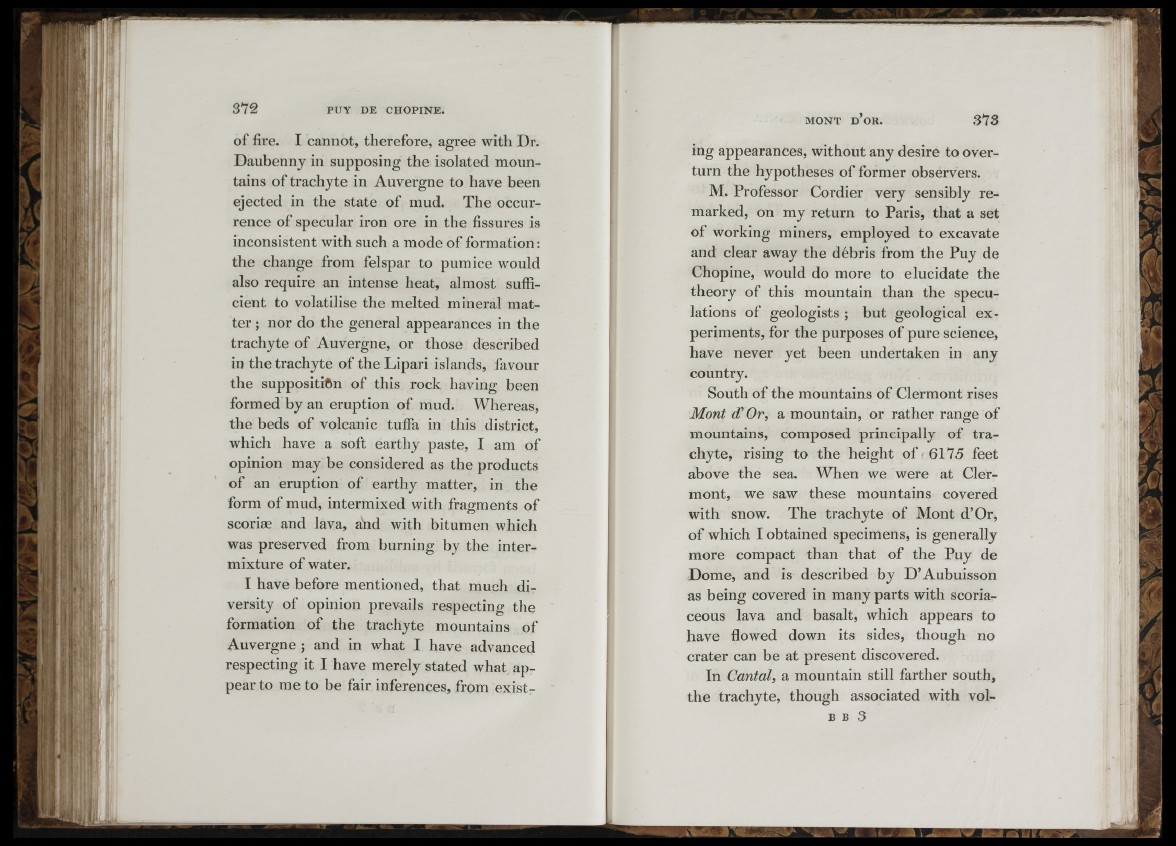
—
I-
.X
iiF - Hj!l
m
1r-'y* -iIiIi«l
-ît
I
i!ii_ : ;
fi i "T
L' l
372 P U Y D E C H O P IN E .
of fire. I cannot, therefore, agree with Dr.
Daubenny in supposing the isolated mountains
of trachyte in Auvergne to have been
ejected in the state of mud. The occurrence
of specular iron ore in the fissures is
inconsistent with such a mode of formation:
the change from felspar to pumice would
also require an intense heat, almost sufii-
cient to volatilise the melted mineral matter
; nor do the general appearances in the
trachyte of Auvergne, or those described
in the trachyte of the Lipari islands, favour
the supposition of this rock having been
formed by an eruption of mud. Whereas,
the beds of volcanic tuffa in this district,
which have a soft earthy paste, I am of
opinion may be considered as the products
of an eruption of earthy matter, in the
form of mud, intermixed with fragments of
scoriæ and lava, and with bitumen which
was preserved from burning by the intermixture
of water.
I have before mentioned, that much diversity
of opinion prevmls respecting the
formation of the trachyte mountains of
Auvergne ; and in what I have advanced
respecting it I have merely stated what appear
to me to be fair inferences, from exist-
M O N T D O R. 373
ing appearances, without any desire to overturn
the hypotheses of former observers.
M. Professor Cordier very sensibly remarked,
on my return to Paris, that a set
of working miners, employed to excavate
and clear away the débris from the Puy de
Chopine, would do more to elucidate the
theory of this mountain than the speculations
o f geologists ; but geological ex periments,
for the purposes of pure science,
have never yet been undertaken in any
country.
South of the mountains of Clermont rises
Mont d Or, a mountain, or rather range of
mountains, composed principally of trachyte,
rising to the height of 6175 feet
above the sea. When we were at Clermont,
we saw these mountains covered
with snow. The trachyte of Mont d’Or,
of which I obtained specimens, is generally
more compact than that of the Puy de
Dome, and is described by D ’Aubuisson
as being covered in many parts with scoriaceous
lava and basalt, which appears to
have flowed down its sides, though no
crater can be at present discovered.
In Cantal, a mountain still farther south,
the trachyte, though associated with vol-
B B 3